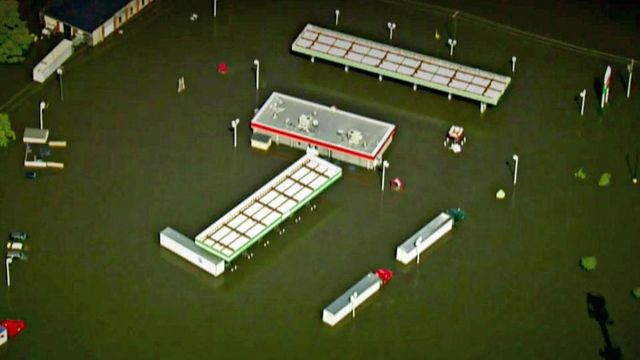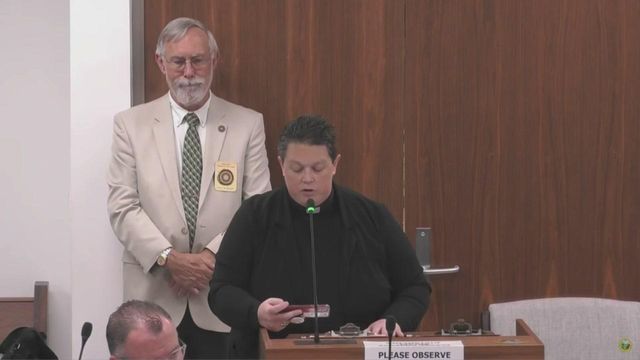NC ignored for decades ways to limit Neuse River flooding
People who live along the Neuse River have seen floodwaters roll downstream and inundate their towns far too often.
"You don't think about this would happen again," Goldsboro resident Jonathan Gardner said after Hurricane Florence swamped the area two months ago.
"Do something about the river. Fix the bottle necks," Kinston restaurant owner Joe Hargitt said. "It will happen again."
WRAL Investigates found a long history of talk to fix the river's flooding problems, but very little action has been taken on the state and federal level.
As far back as 1965, a district engineer for the Army Corps of Engineers found "there is an immediate and urgent need for improvements to provide flood protection" for those along the Neuse River. The study identified 13 reservoir sites in the river basin to control flooding.
Fifty-three years later, two sites – Falls Lake in Wake County and the Buckhorn Reservoir in Wilson – are operational.
"I wish they had executed, that and maybe we wouldn't have the losses that we've had," said Rep. John Bell, R-Wayne.
With eastern North Carolina experiencing a so-called "500-year flood" three times in the last 19 years – Hurricane Floyd in 1999, Hurricane Matthew two years ago and Florence – Bell said all potential solutions need to be on the table, from buyouts to bigger drainage pipes to river dredging to new reservoirs.
"Yes, they're expensive, but what is the net effect? Are we going to find ourselves spending less dollars because we actually put these infrastructures in?" he asked. "We can sure do some things to prevent not only the loss of life, but also the loss of property."
One scenario in a flood protection report released this year by the state calls for so-called dry reservoirs – areas that could be cleared for park land – at Wilson's Mills and Bakers Mill, as well as a new man-made lake at Beulatown. Combined, they could reduce flooding from an event like Florence by 20 to 30 percent in Goldsboro, Kinston and other areas along the Neuse River, cutting damage in dollars by half.
All three sites were part of the 1965 Corps of Engineers study but were never acted upon.
- Kinston business, property owners look to break flooding cycle
- Many NC homeowners find insurance won't cover Matthew, Florence 'double hit'
John Dorman, director North Carolina's Floodplain Mapping Program, said it's time to take projects off of paper and put them to use.
"We now need to take maybe the next step and move forward with other strategies," Dorman said. "The amount of damage that would occur from flooding would be greater than what the cost would be for actually building these reservoirs or other strategies."
Fifty years ago, the cost to build the dry reservoirs and lake was estimated at a combined $22 million. The price tag now tops $186 million, but Dorman said that is still cost-effective, considering recent storm damage estimates from Florence of $17 billion.
"That is a significant number that I believe dwarfs what is the cost of doing these reservoirs," he said.
WRAL Investigates found more evidence of flood control efforts that went nowhere:
- In 1968, a state report recommended aggressive anti-flood action that never made it to lawmakers.
- In 1979, a Flood Damage Reduction Task Force was created and dissolved.
- A 1983 study that focused on those same flooding trouble spots on the Neuse River, as well as problems along the Cape Fear and Lumber rivers, gathered dust on a shelf.
In addition to cost, another obstacle is potential environmental impact. Various environmental groups oppose building new reservoirs. Gov. Roy Cooper has proposed using more than $30 million to study the feasibility of long-term flood prevention. In the meantime, the state emergency management leaders still consider buyouts and building elevation as the most cost-effective solutions.
"People in eastern North Carolina are tired of Band-Aids, and they want solutions," Bell said.
With frustrations rising like the rivers that continually swamp their towns, flood victims are tired of a half-century of talk.
"There may be enough money if they didn't have to spend it recovering to do the work necessary to keep it from happening," Kinston resident Wilbur King said.










